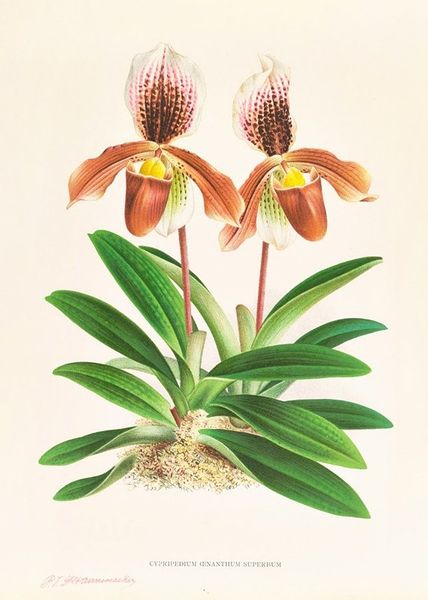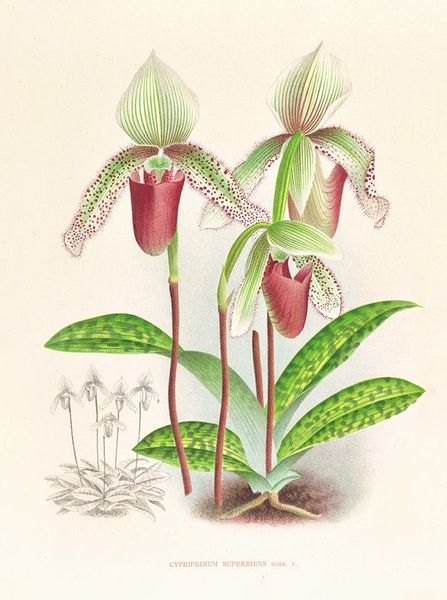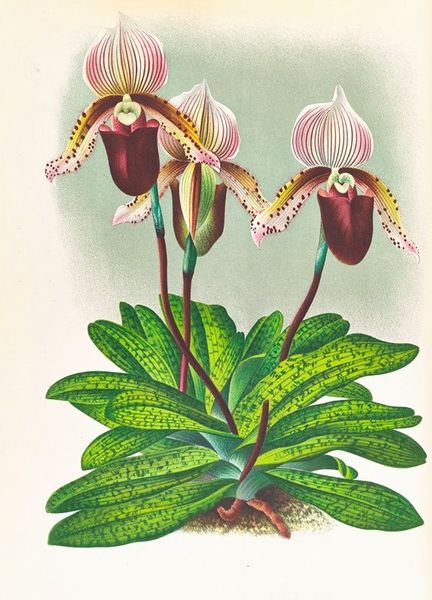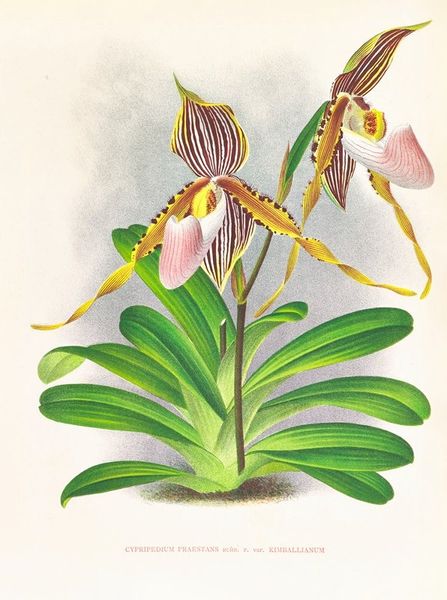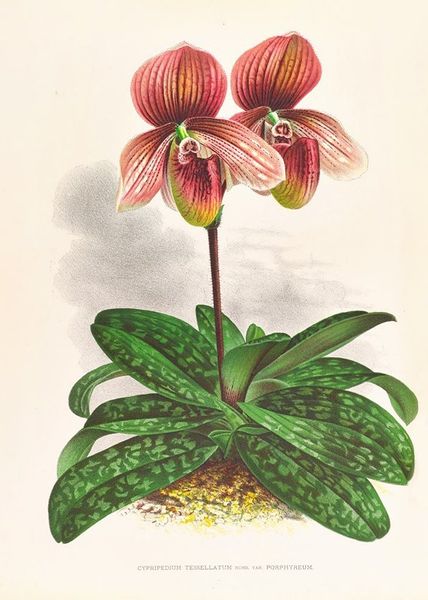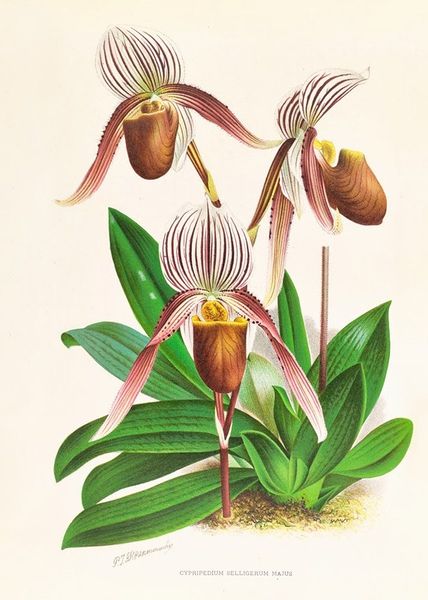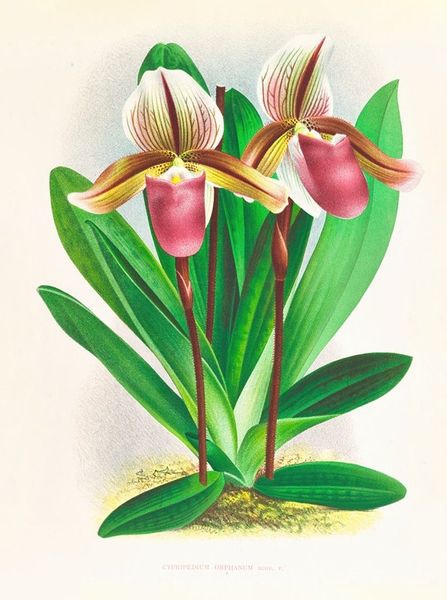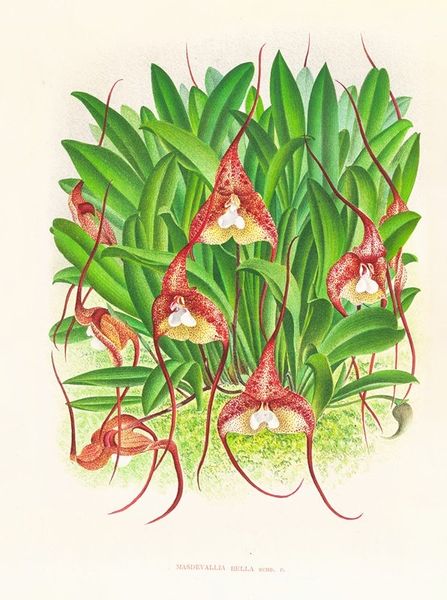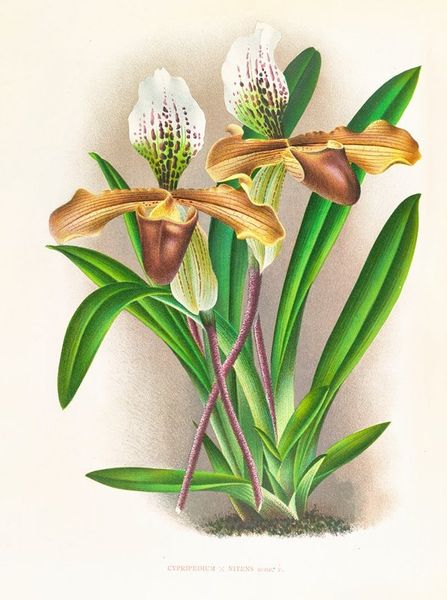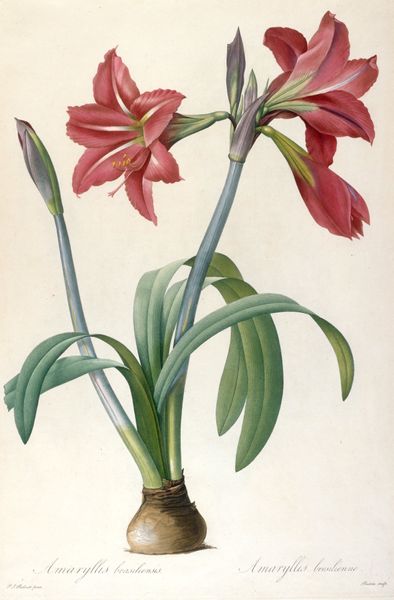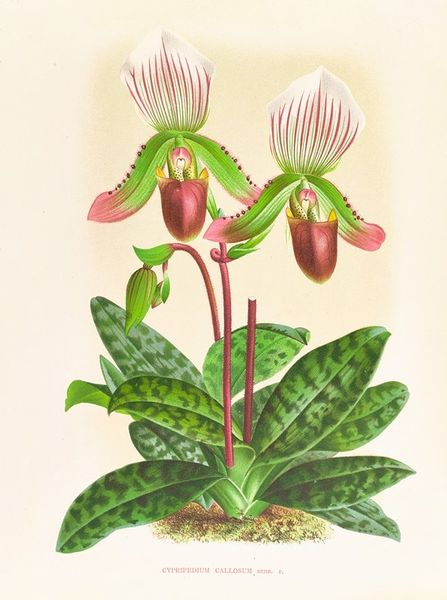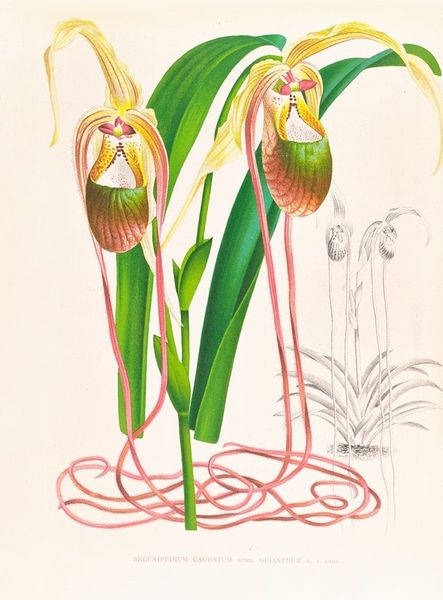
Copyright: Public Domain: Artvee
Editor: Here we have Jean Jules Linden's watercolor, "Cypripedium fraseri," created sometime between 1885 and 1906. It's delicate, precise, and renders the orchids in a remarkably realistic manner. What socio-political influences were at play when these types of botanical illustrations became so popular? Curator: It's crucial to remember the context in which botanical illustrations like this gained popularity. This piece reflects the colonial gaze of the late 19th century, mirroring European interests in documenting and classifying the natural world, especially within colonized territories. The rise of scientific expeditions, and the increasing power of institutions like botanical gardens, all fueled the demand for meticulous illustrations of exotic plants like these orchids. Editor: So, the painting itself, as a beautiful image, served almost as a…record? Curator: Precisely! Consider this image's intended audience and use. Botanical illustrations were integral to scientific publications, contributing to an expanding field of knowledge while reinforcing a certain power dynamic between the West and the regions from which these specimens originated. Ask yourself, where were these orchids found? What did their discovery and depiction mean for both European and Indigenous populations? Editor: It seems then that what might appear like a harmless portrayal of beauty also functioned as an element of colonial science? Curator: Exactly! It’s a fascinating example of how art and scientific pursuits intertwined, sometimes problematically, during that period. The focus was primarily scientific; these images served more to catalog plants rather than purely appreciating aesthetics. What about this painting resonates with you now, considering what we've discussed? Editor: I’ll definitely think about that as I'm leaving! Now I see these lovely orchids as historical evidence tied to social issues, beyond simply being an exquisite drawing. Curator: And hopefully that changes how you view other works too! Recognizing art's embedded role in broader cultural systems deepens our appreciation, and critical analysis.
Comments
No comments
Be the first to comment and join the conversation on the ultimate creative platform.
